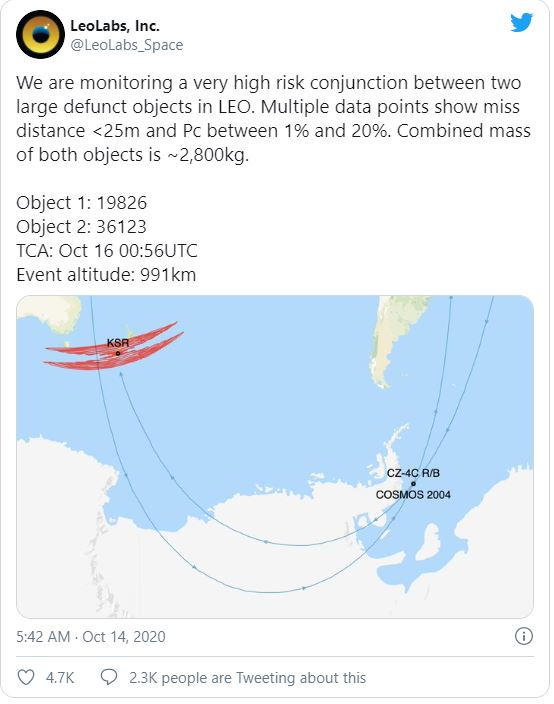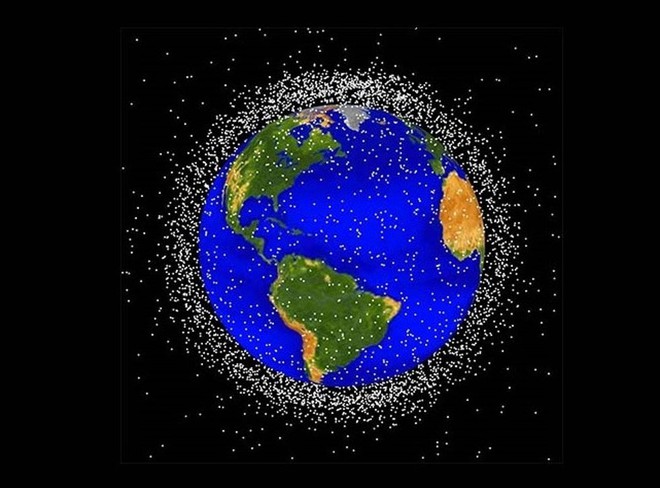What if two spatial junk collide?
- Tram Ho
On September 22, three astronauts serving on the International Space Station (ISS) were ordered to shelter near an escape train in Russia’s station area. Because NASA has discovered a large space debris heading towards the space station, it has therefore started emergency propulsion engines to avoid what they call a “probable association” with the object. .
This is the third time since January that the space station has been forced to abruptly maneuver and it once again highlights the growing problem of debris in Earth’s orbit.
Earlier this week, space junk tracking company LeoLabs issued a warning that another major crash could be imminent.
Part of the Chinese missile has been removed and a decommissioned Soviet satellite will pass through each other within 25 meters, with a collision probability of 10%. Their combined mass of 2,800kg, coupled with a relative speed of 53,000 km / h, means any collision would be extremely catastrophic.
“This is a potentially serious event,” said former astronaut and LeoLabs co-founder Ed Lu. “It’s between two large objects and is at an altitude of 991 kilometers. If it collides a lot of debris would stay in orbit for a long time.”

LeoLabs’ prediction of the crash.
Hundreds – perhaps thousands – of debris, created by the collision, will explode in different directions, creating countless other possibilities of collision. Astronomer Jonathan McDowell, of the Harvard-Smithsonian Center for Astrophysics, said this would increase the number of space debris by “10% to 20%”.
A 1978 study by Nasa scientist Donald Kessler also warned that the domino effect of such an event could create an impenetrable layer of debris, causing the launch of spacecraft or missiles into the air. space done on the ground would not be possible. And basically, it’s like a trap that locked people up on Earth.
It was this research that prompted NASA to set up the Orbital Fragment Program a year later, to develop ways to track space junk and to develop measures to remove it.
But the problem only got worse since then. There are currently an estimated 200,000 objects between 0.4 and 4 inches in size and tens of thousands of objects larger than 4 inches, according to the US Space Monitoring Network.
NASA administrator, Jim Bridenstine, called to action on Twitter last month: “Over the past two weeks, there have been three potential collisions of high interest. The debris is getting worse and worse!”

Currently there is no international law regarding space removal, but some companies are trying to act to mitigate these disasters in the future.
SpaceX is in the process of launching thousands of satellites into orbit, as part of the Starlink space Internet project, which has declared its mission to “keep the space clean”. Specifically, each SpaceX satellite is equipped with a propulsion system, which will be activated to push them into Earth’s atmosphere and burn up, at the end of its life cycle.
Data from LeoLabs shows that the prospect of a collision of the two latest Sino-Russian satellites has been narrowly avoided. But even so, threats still exist.
“Space debris is not the responsibility of any country, but the responsibility of every nation that travels to space,” says the NASA website. “The problem of managing space debris is both an international challenge and an opportunity to preserve the space environment for future space exploration missions … The space around this planet is full of It’s time to put out the trash. “
Consult independent
Source : Genk
